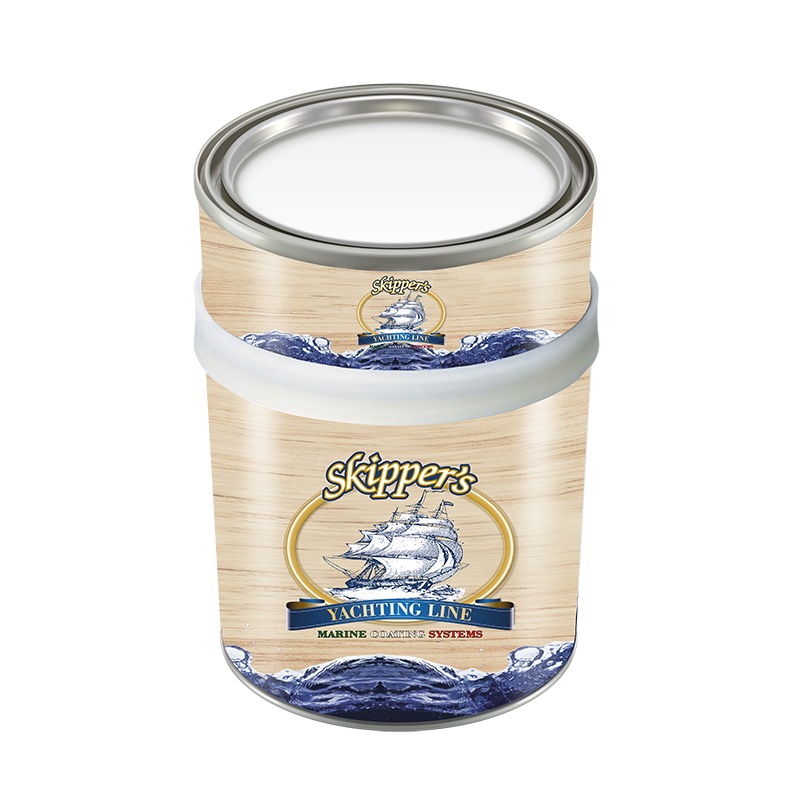

This is a modified version of the Poliglass varnish performing a higher thickness by application of a minor number coats of product, resulting in a substantial saving in term of product and labour cost, while maintaining at the same time chemical and physical characteristics of final product unchanged. This product has also improved characteristics of non-shrinking providing excellent compromise between applied thickness and thickness actually remaining after film curing. It is also recommended in traditional coating systems for wooden floors. The product includes UV filters.
SURFACE PREPARATION AND APPLICATION PROCEDURE
New or restored bare Wood. In order to obtain “closed-pore” smooth surface, apply 1 coat of POLIGLASS varnish (code 5X0000) diluted up to 50-100% with Thinner 203 (depending on wood absorption). Let dry and then apply 2-3 coats of POLIGLASS GEL UV varnish diluted 30-40% with Thinner 203. Afterr 10 hours sandpaper with fine abrasive paper and apply 2 coats of finishing varnish such as SPACE CLEAR UV or ACRIGLASS UV.
Previously Varnished Wood. Sandpaper the old varnish thoroughly and remove dust. If the old paint system was made with two-component polyurethane varnish, just overcoat with 2-3 coats of POLIGLASS GEL UV varnish allowing 8-10 hours between coats. If the old paint system is unknown it is recommended to test the new varnish on a small area to check if POLIGLASS GEL UV is compatible with the old varnish and to make sure that the old coating is still in sound condition and does not soften when overcoated; if there will be no inconvenient apply 2-3 coats of POLIGLASS GEL UV varnish. In the case of loose, powdery or non-compatible old varnish, it is recommended that the old varnish should be stripped completely down to bare wood with a paint-remover or by scraping and sandpapering. Once back to bare wood follow the recommended coating system as indicated above for new wood.Wet on wet technique. The varnish may be applied by wet on wet technique. When this application method is used, care should be taken in order not to exceed the paint thickness applied in each single coat as this could lead to solvent entrapment and impair the final result. The more time is allowed between coats and the better is (e.g. a minimum of 15-20 minutes at 20°C at least is advisable). By using the wet on wet technique the sandpapering process it is obviously not necessary; this technique must never be used for the application of the first coat of varnish direct onto wood substrate but only starting from the second coat (for best results in fact the first coat should be left to dry for at least 24 hours).
| Paint Type | Two components |
| Binder type A | Poliurethane |
| Binder type B | Isocyanates |
| Code & colour A | 5X4006 |
| Code & colour B | 8ZGLAS |
| Specific gravity kg/lt (±0,05) | 1.040 (A) - 1.010 (B) |
| Shelf life +23°C (±2) | 24 months in unopened cans |
| Viscosity Ford (Ø4 a 20°C) | 60-80 sec. (20°C) |
| Application | Brush-Roller-Spray |
| Mixing ratio A+B by volume | 2 parts Sol.A with 1 Sol.B |
| Pot life A+B (20°C) | use within 4 hours |
| Brush-Roller | 10-15% Thinner 205 |
| Spray | 10-20% Thinner 203 |
| Dust dry | 15-20 minutes (20c) |
| Recoat time | 8-10 h (20°c) |
| Application temperature | Between +10 C and +40 C |
| Relevant humidity | Less than 80% |
| Dry film thickness advised | 150 microns per coat |
| Theoret. coverage m2/Lt | 6-7 |
Colors: TRASPARENTE
Color code: 5X4006
Before starting paint application please carefully read all the safety precautions indicated on the label of each can or in the product safety data sheet available on request. For further information please do not hesitate to contact our technical staff.
The above information is given to the best of our current knowledge, however, because the conditions of use of our products are beyond our control, no warranty is given or to be implied in respect of such information. Our technical staff can be contacted to study customer's specific requirements involving our products in order to enable their most effective use. Dilution rates and drying times must be considered only indicative, mainly related to a temperature of 20 ° C (68°F) and may vary according to prevailing temperature, in presence of particular weather conditions or depending on application procedures.